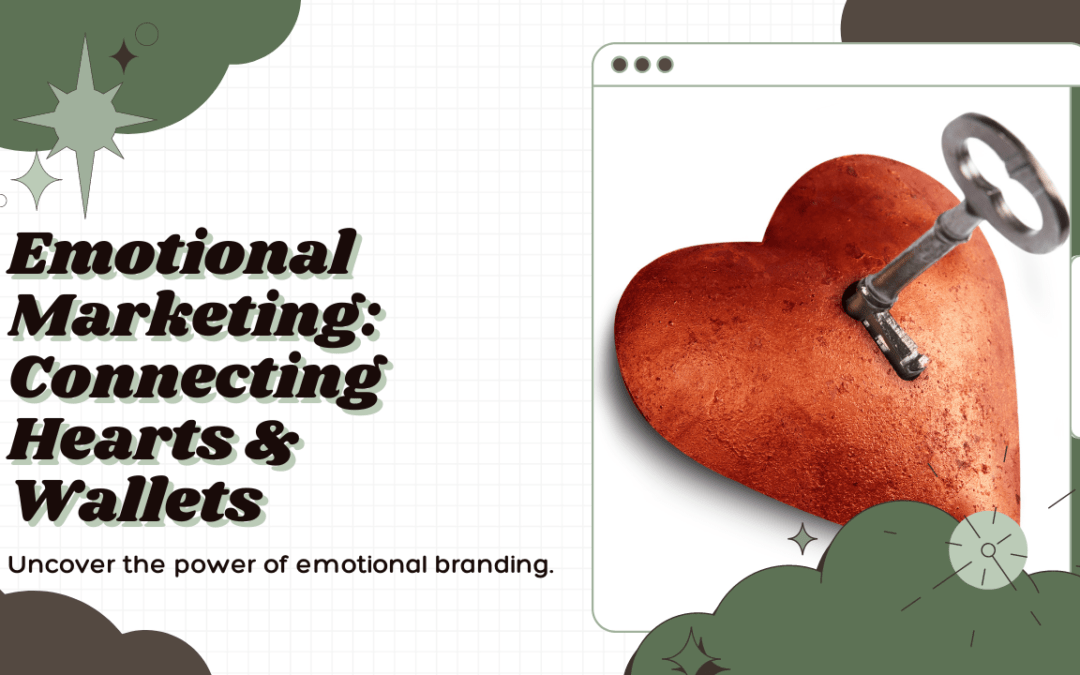The Heartbeat of Marketing: Why Emotion Is Your Brand’s Secret Weapon
Remember that Qantas ad with the kids singing “I Still Call Australia Home”? Or perhaps the recent AAMI ‘Rhonda and Ketut’ campaign that tapped into our nostalgic love for those iconic characters? These ads weren’t just about selling plane tickets or car insurance; they were tugging at our heartstrings, reminding us of family, love, and the undeniable feeling of belonging.
That, my friends, is the power of emotional marketing. And in today’s world, where we’re bombarded with over 5,000 ads every single day, it’s not just a nice-to-have, it’s the ONLY way to truly cut through the noise. According to a 2023 study by Kantar, emotionally engaging ads are twice as likely to be remembered as those that focus solely on logic and features.
Why We’re All a Bit Emotional (and Why That’s Good for Business)
We Aussies are a passionate bunch. Whether it’s cheering on the Wallabies, having a barbie with mates, or shedding a tear at the sight of a kangaroo joey, emotions are a big part of who we are. And as consumers, those emotions don’t magically disappear when we’re making a purchase.
In fact, research shows that up to 85% of our purchase decisions are driven by subconscious, emotional factors. Think about it – you’re more likely to buy that new pair of shoes because they make you feel confident, not because they’re the most technically advanced footwear on the market.
The Rise of the Emotionally Intelligent Consumer
Today’s consumers are more emotionally intelligent than ever before. We’re not just looking for products that meet our needs; we’re looking for brands that share our values, understand our struggles, and make us feel good. We want brands that tell stories, evoke memories, and connect with us on a human level.
This shift is especially pronounced in Australia, where a whopping 84% of consumers say they’re more likely to purchase from brands they perceive as authentic and purpose-driven (source: 2023 Australian Consumer Sentiment Survey).
It’s All About the Feels: The Science of Emotional Marketing
Ever wondered why some ads make you laugh, cry, or even get a little angry? It’s not by accident. Marketers are tapping into the power of neuroscience to trigger specific emotional responses in consumers.
For example, studies have shown that the mere sight of a baby’s face can release a flood of oxytocin, the “love hormone,” making us more likely to feel connected to a brand. Similarly, the sound of upbeat music can activate the reward centers in our brains, making us feel happy and excited.
Storytelling: The Heart and Soul of Emotional Marketing
One of the most powerful tools in the emotional marketer’s arsenal is storytelling. Think of the iconic Australian Lamb ads that evoke a sense of national pride and unity. These ads don’t just tell us about the product; they tell us a story about who we are as a nation.
When done right, storytelling can create a deep emotional connection between consumers and brands. It can make us laugh, cry, and ultimately, remember the brand long after the ad is over.
The Three Pillars of Effective Storytelling:
- Authenticity: Tell stories that are genuine and relatable.
- Conflict: Create tension and resolution to keep the audience engaged.
- Transformation: Show how your brand can help the customer overcome challenges and achieve their goals.
Unleashing the Power of Emotion: Strategies for Your Brand
Now that you understand the importance of emotion in marketing, let’s explore some practical strategies you can use to harness its power for your brand:
- Know Your Audience (Like, Really Know Them): Dive deep into their demographics, psychographics, and emotional triggers. What makes them tick? What keeps them up at night? What are their hopes and dreams?
- Craft Compelling Stories: Don’t just list features and benefits. Tell stories that resonate with your audience’s emotions and aspirations.
- Choose the Right Channels: Different channels evoke different emotions. A heartwarming video might be perfect for social media, while a nostalgic print ad could work well in a magazine targeted towards older demographics.
- Use Emotional Triggers Wisely: Humor, surprise, nostalgia, and fear are all powerful tools, but use them thoughtfully and ethically.
Measuring the Emotional Impact: Beyond the Clicks and Likes
While clicks, likes, and shares are important metrics, they don’t tell the whole story when it comes to emotional marketing. You need to dig deeper to truly understand how your campaigns are impacting your audience’s emotions.
Consider using tools like consumer sentiment analysis to track online conversations about your brand. Are people expressing positive emotions like love, joy, and trust? Or are they feeling angry, frustrated, or disappointed?
You can also conduct surveys and focus groups to gather qualitative data on how your marketing makes people feel. This will help you fine-tune your messaging and ensure you’re hitting the right emotional notes.
The Emotional Landscape of Modern Consumers: An In-depth Look
Let’s dive deeper into the minds of today’s consumers. What makes them tick? What motivates their decisions? And how can understanding their emotional landscape revolutionise your marketing approach?
Information Overload: The Struggle is Real
Information overload has led to what’s known as “banner blindness.” Consumers are so accustomed to seeing ads that they subconsciously tune them out. The result? Your meticulously crafted marketing messages might be disappearing into the digital abyss.
The Solution? Emotionally Charged Content
Emotional marketing is the antidote to information overload. When done right, it captures attention, cuts through the clutter, and makes your brand memorable. Think of it as a beacon of light in a sea of digital noise.
The Rise of Conscious Consumerism: Values Matter
Today’s consumers aren’t just looking for products; they’re looking for brands that align with their values. We want to support companies that are making a positive impact on the world, whether it’s through sustainable practices, social responsibility, or ethical sourcing.
This shift towards conscious consumerism is especially pronounced among younger generations. Millennials and Gen Z are more likely to buy from brands that share their values and are willing to pay a premium for products that align with their ethics.
Tapping into Values-Driven Marketing
To connect with these conscious consumers, you need to move beyond features and benefits. Tell stories about your brand’s values, showcase your commitment to sustainability, and highlight the positive impact you’re making on the world.
The Importance of Personalisation: One Size Doesn’t Fit All
In the age of big data and AI, personalisation is no longer a luxury; it’s an expectation. Consumers want brands to understand their individual needs and preferences. They want to feel seen, heard, and valued.
This is where emotional marketing shines. By crafting messages that resonate with individual consumers on an emotional level, you can create a sense of connection and belonging that goes beyond a simple transaction.
Think about how Netflix recommends shows based on your viewing history or how Spotify creates personalised playlists. These brands use data to understand our preferences and deliver content that we’re more likely to enjoy.
The Power of Emotional Data
Emotional data can be just as valuable as demographic or behavioral data. By understanding the emotions that drive your customers, you can create marketing campaigns that speak directly to their hearts and minds.
For example, if you know that your target audience is primarily driven by fear of missing out (FOMO), you can create ads that highlight the exclusivity of your product or service.
Case Study: Emotional Marketing in Action
Let’s take a look at a real-world example of how emotional marketing can drive incredible results.
Remember the “Share a Coke” campaign by Coca-Cola? It was a brilliant example of how to tap into the power of personalisation and social connection. By replacing the iconic Coca-Cola logo with popular names, the brand created a sense of excitement and ownership among consumers.
The results were astounding. In Australia, the campaign led to a 7% increase in Coca-Cola consumption among young adults. It also sparked a social media frenzy, with millions of people sharing photos of their personalised Coke bottles online.
The “Share a Coke” campaign is a testament to the power of emotional marketing. It shows us that when we connect with consumers on a deeper level, we can create campaigns that are not only effective but also memorable and impactful.
It’s Time to Get Emotional (About Your Marketing)
The future of marketing is emotional. Consumers are craving connection, authenticity, and purpose. By tapping into the power of emotion, you can create marketing campaigns that not only drive sales but also build lasting relationships with your audience.
Remember, we’re not just selling products or services; we’re selling emotions, experiences, and a sense of belonging. Let’s embrace the power of emotion and create marketing that truly resonates with the heart and soul of our audience.
Wishing you epic wins,
 Red/ Marketer with a Soul
Red/ Marketer with a Soul
Drop us a Line 📞 🗝 1300 902 588
Follow Us on Social ⏬⏬








